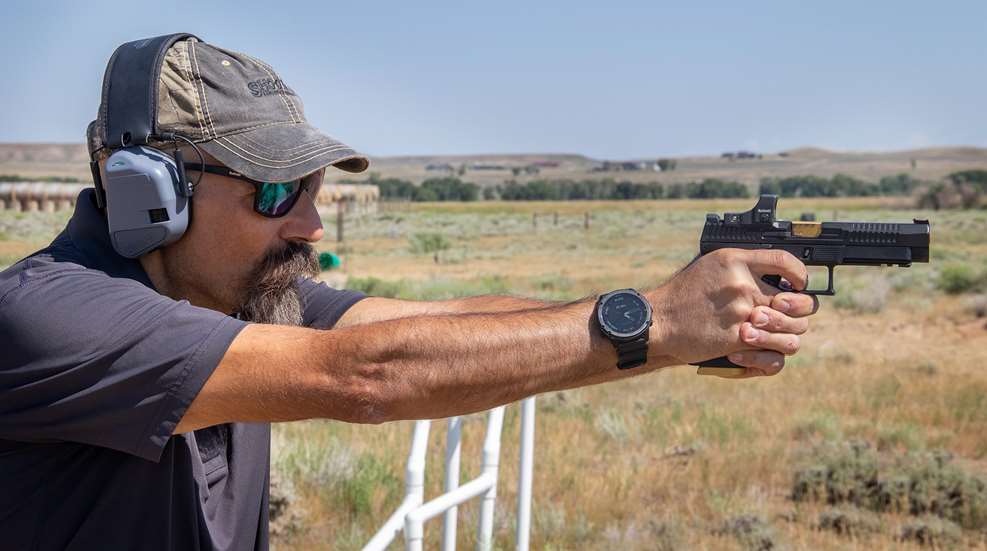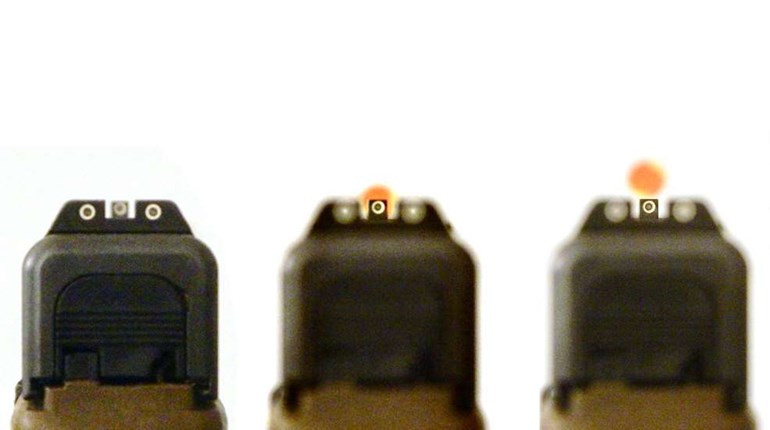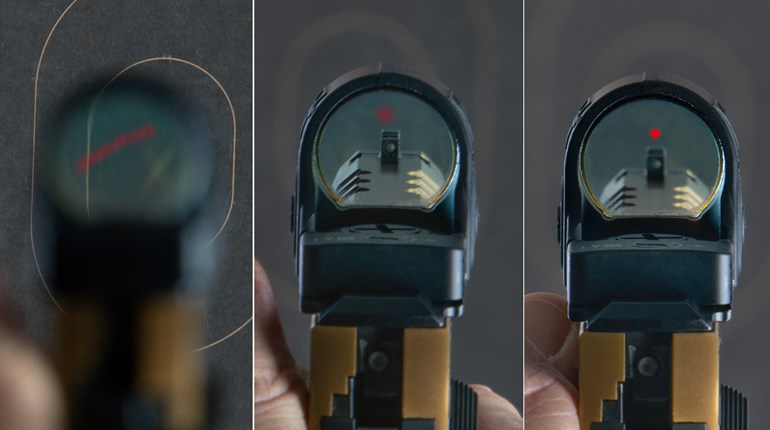
When shooting, success is often defined as ‘hitting the target with the projectile up to the maximum range of the firearm and capability of the shooter.’ This is a simple enough a task when you effectively align the muzzle with its intended target.
Given no time constraints, it doesn’t matter how long it takes to stabilize the muzzle and send off the round without disturbing muzzle orientation to the target. Adding two factors—a time requirement and target difficulty—introduces a challenge in acquiring adequate stability in the allotted amount of time. The more demanding the time requirement, the greater the skill required of the shooter, creating an alignment dilemma.
Start with a holstered pistol, either open or concealed carry, both hands by your side. On the fire command, draw the pistol from your holster. Build stability and align the muzzle with the center of the intended target 10 yards downrange and press off the round in under two seconds. To some shooters this is challenging, while others can do it in half that time.
The alignment process comprises two general-performance factors, one mechanical and the other visual. Body mechanics are defined by your ability to move quickly enough from your holster to meet the time requirement. One way to test this is to forgo a target, face downrange into an open berm and run your maximum draw stroke on a timer. If you can’t do it under a second mechanically—without having to worry about a target—then you can’t do it if a target was part of the equation.
Let’s say that you are mechanically capable of drawing your firearm, pointing it downrange at the berm and pressing the trigger in under one second. Now, add a target and then orient your muzzle toward the center of that target prior to the press.
Shooters have their own definitions for the term ‘point shooting” so instead of trying to slug through the quagmire of multiple definitions, let’s simply refer to aligning the gun without the use of sights as ‘unsighted fire.’ Even though the gun is minimally within your peripheral field of vision. Several shooters the likes of Bob Munden can rip a handgun out of the holster sub second, unsighted and hit anything out to 10 yards or so with incredible accuracy.
Should you be mechanically capable of using your sights, then the only thing left is visual processing. As per top-level competition shooter Travis McCamish “You can only shoot as fast as you can visually process” which is at the core of visual alignment.
The alignment dilemma is introduced when the time requirement exceeds a shooter’s skill. How can you work past the edge of your skills envelop and develop your abilities to the next level? The professionals offer three recommendations; use your proprioception, peripheral vision and a hard target focus.
Proprioception
The medical term ‘proprioception’ is defined as a sense of perception, usually at a subconscious level, of the movements and position of the body and especially its limbs, independent of vision; this sense is gained primarily from input from sensory nerve terminals in muscles and tendons (muscle spindles) and the fibrous capsule of joints combined with input from the vestibular apparatus. The vestibular system, in vertebrates, is a sensory system that creates the sense of balance and spatial orientation for the purpose of coordinating movement with balance. For instance, ever since you were a baby, you were able to point at something using your index finger. This demonstrates proprioception.
Proprioception applies to shooting. Professional shooter Ron Avery (deceased) was a proponent of what he called ‘finding your NPOA’ or natural point of aim. He would have you stand down range with your eyes closed, draw your handgun from the holster and then, using proprioception, when you feel that it is aligned open your eyes to confirm. If it was not, then make no adjustments with your arms, but only your lower body. The purpose of the drill is to allow your body to teach you how to readily access and employ your onboard auto-alignment system aka your proprioceptors.
Peripheral Vision
When working from the holster you can pick up a crude visual reference the split-second any part of the gun enters the periphery of your field of vision. Although different than proprioception, it does still require developing a part of your visual acuity that is not looking directly at the gun.
Alignment means to orient the muzzle directly with the target. Every micro adjustment to correct for extraneous inputs cost valuable hundredths and even tenths of a second during visual alignment processing. You can’t fix what you can’t see. As such, your peripheral vision can help cut down on extraneous movement.
Hard Focus
Former operational member of U.S. Marine Reconnaissance, Army Special Forces (Green Beret) and 1st SFOD-D (Delta Force) Mike Pannone discusses the sheer benefit of a hard focus “Where you look at is where you go. Just like driving, if you look at the obstacle you run into the obstacle, and if you look at the out you drive to the out.”
“With the red dot if you stare at a precise point on the target your vision will “pull” the dot to the point you are staring at. Conversely, if you look at the dot, the dot will “pull” your vision wherever it goes in the recoil cycle. Vision drives the process and so direct your vision to a distinct spot on the target and maintain it there to get the best results.”
The Payoff
Historical references to the famous British longbow attribute proficiency to “the practice of two hours in the morning and two hours in the afternoons for a total of four hours a day” – a serious time commitment by any standard of any era. The bowman practiced so much that “there was no need to look at any part of the weapon whatsoever except for focus on the target.” Expert shooters like Bill Rogers, founder of the Roger’s Reactive Shooting School and retired USMC firearms expert Colonel Joe Knapp advise “When you shoot, it should be with a hard focus on the visual center of the target.”
Using proprioception to feel your way to the target (tactile), your peripheral vision to pick up a crude visual reference as early as possible (timing) and a precise, (deliberate and sustained) visual focal point equates to greater control. Applying greater control significantly contributes to solving the alignment dilemma.




































